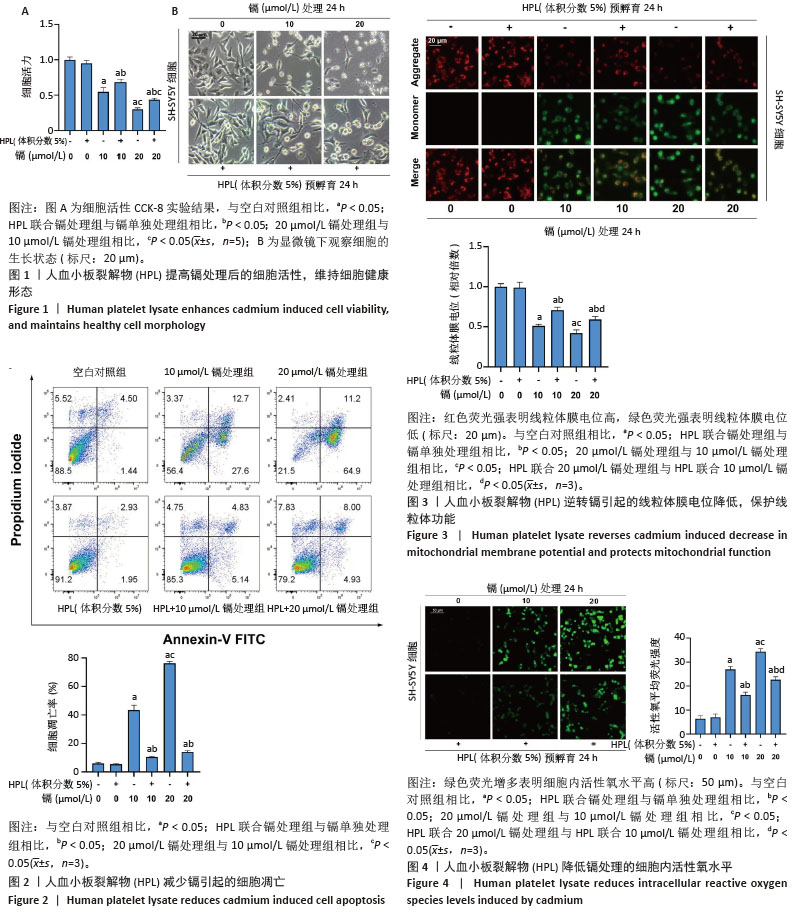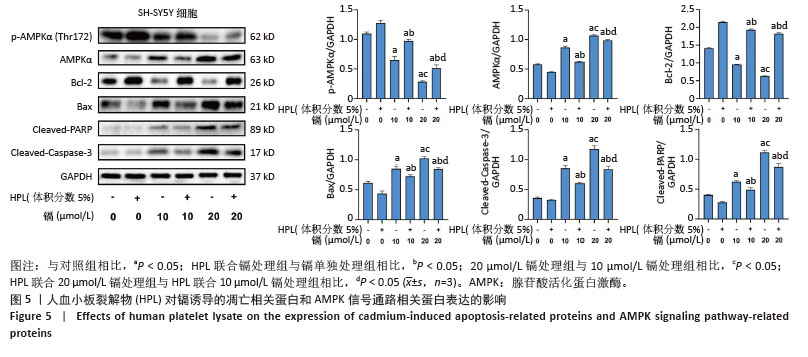[1] BARNHAM KJ, BUSH AI. Metals in Alzheimer’s and Parkinson’s diseases. Curr Opin Chem Biol. 2008;12(2):222-228.
[2] REZAEI K, MASTALI G, ABBASGHOLINEJAD E, et al. Cadmium neurotoxicity: Insights into behavioral effect and neurodegenerative diseases. Chemosphere. 2024;364:143180.
[3] NEWELL ME, BABBRAH A, ARAVINDAN A, et al. Prevalence rates of neurodegenerative diseases versus human exposures to heavy metals across the United States. Sci Total Environ. 2024;928:172260.
[4] HAIDER FU, LIQUN C, COULTER JA, et al. Cadmium toxicity in plants: Impacts and remediation strategies. Ecotoxicol Environ Saf. 2021;211:111887.
[5] ĐUKIĆ-ĆOSIĆ D, BARALIĆ K, JAVORAC D, et al. An overview of molecular mechanisms in cadmium toxicity. Curr Opin Toxicol. 2020;19:56-62.
[6] 王洋洋.镉暴露抑制自噬加剧糖尿病大鼠肾脏损伤[D].扬州:扬州大学,2023.
[7] ARRUEBARRENA MA, HAWE CT, LEE YM, et al. Mechanisms of Cadmium Neurotoxicity. Int J Mol Sci. 2023;24(23):16558.
[8] GUAN S, TANG M. Exposure of quantum dots in the nervous system: Central nervous system risks and the blood-brain barrier interface. J Appl Toxicol. 2024;44(7):936-952.
[9] 乔梦芸,段爱茹,鱼涛,等.铅、镉、汞、砷联合暴露SH-SY5Y细胞损伤和可能机制初探[J].毒理学杂志,2024,38(4):277-285+299.
[10] NEBIE O, BUÉE L, BLUM D, et al. Can the administration of platelet lysates to the brain help treat neurological disorders? Cell Mol Life Sci. 2022;79(7):379.
[11] DELILA L, NEBIE O, LE NTN, et al. Neuroprotective effects of intranasal extracellular vesicles from human platelet concentrates supernatants in traumatic brain injury and Parkinson’s disease models. J Biomed Sci. 2024;31(1):87.
[12] 左佳蕙,李一鸣,杨舒苇,等.血小板裂解物在再生医学和细胞治疗领域的研究进展[J].中国输血杂志,2023,36(7):642-646.
[13] GOUEL F, TIMMERMAN K, GOSSET P, et al. Whole and fractionated human platelet lysate biomaterials-based biotherapy induces strong neuroprotection in experimental models of amyotrophic lateral sclerosis. Biomaterials. 2022;280:121311.
[14] DELILA L, NEBIE O, LE NTN, et al. Neuroprotective activity of a virus-safe nanofiltered human platelet lysate depleted of extracellular vesicles in Parkinson’s disease and traumatic brain injury models. Bioeng Transl Med. 2022;8(1):e10360.
[15] WU ZS, LUO HL, CHUANG YC, et al. Platelet Lysate Therapy Attenuates Hypoxia Induced Apoptosis in Human Uroepithelial SV-HUC-1 Cells through Regulating the Oxidative Stress and Mitochondrial-Mediated Intrinsic Apoptotic Pathway. Biomedicines. 2023;11(3):935.
[16] MURALEEDHARAN R, DASGUPTA B. AMPK in the brain: its roles in glucose and neural metabolism. FEBS J. 2022;289(8):2247-2262.
[17] HARDIE DG, ROSS FA, HAWLEY SA. AMPK: a nutrient and energy sensor that maintains energy homeostasis. Nat Rev Mol Cell Biol. 2012;13(4):251-262.
[18] XIE Z, WANG X, LUO X, et al. Activated AMPK mitigates diabetes-related cognitive dysfunction by inhibiting hippocampal ferroptosis. Biochem Pharmacol. 2023;207:115374.
[19] WANG D, CAO L, ZHOU X, et al. Mitigation of honokiol on fluoride-induced mitochondrial oxidative stress, mitochondrial dysfunction, and cognitive deficits through activating AMPK/PGC-1α/Sirt3. J Hazard Mater. 2022;437:129381.
[20] ZHONG S, CHEN W, WANG B, et al. Energy stress modulation of AMPK/FoxO3 signaling inhibits mitochondria-associated ferroptosis. Redox Biol. 2023;63:102760.
[21] DING MR, QU YJ, HU B, et al. Signal pathways in the treatment of Alzheimer’s disease with traditional Chinese medicine. Biomed Pharmacother. 2022;152:113208.
[22] CHEN L, XU B, LIU L, et al. Cadmium induction of reactive oxygen species activates the mTOR pathway, leading to neuronal cell death. Free Radic Biol Med. 2011;50(5):624-632.
[23] 霍俊凤,董爱国.不同浓度镉胁迫诱导乌龟脂质过氧化损伤的研究[J].山西中医学院学报,2019,20(1):17-19.
[24] 刘振海,姚源,张振庭,等.小板裂解液对人根尖牙乳头干细胞体外增殖的影响[J].口腔颌面修复学杂志,2016,17(4):198-201.
[25] SOVKOVA V, VOCETKOVA K, HEDVIČÁKOVÁ V, et al. Cellular Response to Individual Components of the Platelet Concentrate. Int J Mol Sci. 2021;22(9):4539.
[26] VIAU S, LAGRANGE A, CHABRAND L, et al. A highly standardized and characterized human platelet lysate for efficient and reproducible expansion of human bone marrow mesenchymal stromal cells. Cytotherapy. 2019;21(7):738-754.
[27] LEE HW, CHOI KH, KIM JY, et al. Proteomic Classification and Identification of Proteins Related to Tissue Healing of Platelet-Rich Plasma. Clin Orthop Surg. 2020;12(1):120-129.
[28] OELLER M, LANER-PLAMBERGER S, KRISCH L, et al. Human Platelet Lysate for Good Manufacturing Practice-Compliant Cell Production. Int J Mol Sci. 2021;22(10):5178.
[29] 谢兴琴,聂煜绮,张怡.生物材料人血小板裂解液在组织再生修复中的应用与作用[J].中国组织工程研究,2022,26(28):4553-4561.
[30] PETERS K, HELMERT T, GEBHARD S, et al. Standardized Human Platelet Lysates as Adequate Substitute to Fetal Calf Serum in Endothelial Cell Culture for Tissue Engineering. Biomed Res Int. 2022;2022:3807314.
[31] CHEN YC, CHUANG EY, TU YK, et al. Human platelet lysate-cultured adipose-derived stem cell sheets promote angiogenesis and accelerate wound healing via CCL5 modulation. Stem Cell Res Ther. 2024;15(1):163.
[32] CENTENO C, FAUSEL Z, STEMPER I, et al. A Randomized Controlled Trial of the Treatment of Rotator Cuff Tears with Bone Marrow Concentrate and Platelet Products Compared to Exercise Therapy: A Midterm Analysis. Stem Cells Int. 2020;2020:5962354.
[33] CENTENO C, SHEINKOP M, DODSON E, et al. A specific protocol of autologous bone marrow concentrate and platelet products versus exercise therapy for symptomatic knee osteoarthritis: a randomized controlled trial with 2 year follow-up. J Transl Med. 2018;16(1):355.
[34] NAJAFIPOUR H, ROSTAMZADEH F, JAFARINEJAD-FARSANGI S, et al. Human platelet lysate combined with mesenchymal stem cells pretreated with platelet lysate improved cardiac function in rats with myocardial infarction. Sci Rep. 2024;14(1):27701.
[35] NEBIE O, CARVALHO K, BARRO L, et al. Human platelet lysate biotherapy for traumatic brain injury: preclinical assessment. Brain. 2021;144(10):3142-3158.
[36] QIU D, LI G, HU X, et al. Preclinical evaluation on human platelet lysate for the treatment of secondary injury following intracerebral hemorrhage. Brain Res Bull. 2025;220:111153.
[37] GOUEL F, DO VAN B, CHOU ML, et al. The protective effect of human platelet lysate in models of neurodegenerative disease: involvement of the Akt and MEK pathways. J Tissue Eng Regen Med. 2017;11(11): 3236-3240.
[38] BOORBOORI MR, ZHANG H. The effect of cadmium on soil and plants, and the influence of Serendipita indica (Piriformospora indica) in mitigating cadmium stress. Environ Geochem Health. 2024;46(11):426.
[39] YAN L, CHEN C, ZHU Y, et al. Cadmium-induced phytotoxicity and tolerance response in the low-Cd accumulator of Chinese cabbage (Brassica pekinensis L.) seedlings. Int J Phytoremediation. 2021;23(13):1365-1375.
[40] XU C, CHEN S, XU M, et al. Cadmium Impairs Autophagy Leading to Apoptosis by Ca2+-Dependent Activation of JNK Signaling Pathway in Neuronal Cells. Neurochem Res. 2021;46(8):2033-2045.
[41] WEN S, WANG L, ZHANG C, et al. PINK1/Parkin-mediated mitophagy modulates cadmium-induced apoptosis in rat cerebral cortical neurons. Ecotoxicol Environ Saf. 2022;244:114052.
[42] VELLINGIRI B, SURIYANARAYANAN A, SELVARAJ P, et al. Role of heavy metals (copper (Cu), arsenic (As), cadmium (Cd), iron (Fe) and lithium (Li)) induced neurotoxicity. Chemosphere. 2022;301:134625.
[43] FEDERICO A, CARDAIOLI E, DA POZZO P, et al. Mitochondria, oxidative stress and neurodegeneration. J Neurol Sci. 2012;322(1-2):254-262.
[44] ISLAM MT. Oxidative stress and mitochondrial dysfunction-linked neurodegenerative disorders. Neurol Res. 2017;39(1):73-82.
[45] SAS K, ROBOTKA H, TOLDI J, et al. Mitochondria, metabolic disturbances, oxidative stress and the kynurenine system, with focus on neurodegenerative disorders. J Neurol Sci. 2007;257(1-2):221-239.
[46] RENU K, CHAKRABORTY R, MYAKALA H, et al. Molecular mechanism of heavy metals (Lead, Chromium, Arsenic, Mercury, Nickel and Cadmium) - induced hepatotoxicity - A review. Chemosphere. 2021;271:129735.
[47] AL-HASHEM FH, BASHIR SO, DAWOOD AF, et al. Vanillylacetone attenuates cadmium chloride-induced hippocampal damage and memory loss through up-regulation of nuclear factor erythroid 2-related factor 2 gene and protein expression. Neural Regen Res. 2024;19(12):2750-2759.
[48] HERZIG S, SHAW RJ. AMPK: guardian of metabolism and mitochondrial homeostasis. Nat Rev Mol Cell Biol. 2018;19(2):121-135.
[49] SHATI AA. Resveratrol protects against cadmium chloride-induced hippocampal neurotoxicity by inhibiting ER stress and GAAD 153 and activating sirtuin 1/AMPK/Akt. Environ Toxicol. 2019;34(12):1340-1353.
|

